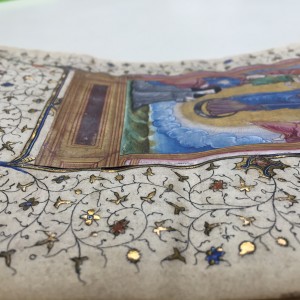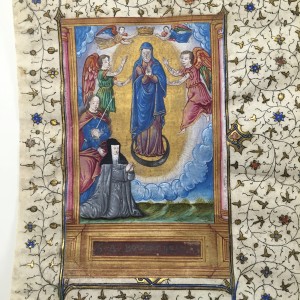By Caitlin Moore
Louisa Smieska (postdoctoral researcher, CHESS) and Ruth Mullett (Ph.D. Candidate, Medieval Studies) have been working with Laurent Ferri, (Curator of pre-1800 collections for Cornell University’s Rare and Manuscript Collections) to identify inorganic pigments used in some of the illuminated manuscripts in Cornell’s collection. They will be performing x-ray fluorescence mapping (MA-XRF) experiments at CHESS (Cornell High Energy Synchrotron Source). This analysis will help to determine the chemical makeup of the pigments in a non-invasive way. More specifically, the experiments will yield maps that show the 2D concentrations of chemical elements present in the inks and pigments. Knowing what elements are present can allow researchers to infer the identities of the pigments, and information on chemical impurities might also shed some light on the geographical source of certain pigments.
Louisa and Ruth are particularly interested in using this technology to determine what might lie beneath this image, which you can see has been adhered to the page rather than being painted directly on the parchment. The x-ray analysis could potentially help uncover what is beneath the affixed image, without having to perform the invasive process of physically removing it.
Leaf from a Book of Hours, Paris, ca. 1500 Coronation of the Virgin

